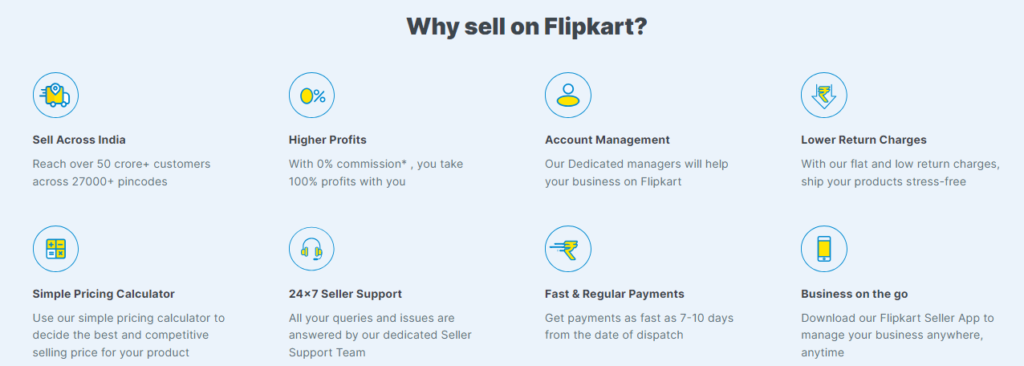Flipkart, India’s prominent online marketplace, offers tremendous opportunities for sellers. Started in 2007, Flipkart has enabled millions of consumers, sellers, merchants, and small businesses to be a part of India’s digital commerce revolution, with a registered customer base of more than 400 million, offering over 150 million products across 80+ categories. Here’s a step-by-step guide on how to get started:

We provide flipkart seller account management services, Flipkart product listing services, brand store creation, registeration, brand approval, promotion and advertisiment etc. For more details Register Now…!!!
1. Who Can Sell on Flipkart?
Flipkart welcomes individuals, Sole Proprietorship Firms, Pvt. Ltd. companies, LLPs, Partnerships, Trusts, and Foundations to sell their unique brand products on the platform.
2. Registration Process for Entities:
- PAN card.
- Bank account in the name of the individual or business.
- GST registration.
- Proof of identification.
- Address proof documents.
- A valid email ID.
- A valid contact number.
- Bank statement or canceled cheque of the registered account.

3. Steps to Register as a Seller on Flipkart:
Visit https://seller.flipkart.com and register by following the prompts.
4. Product Listing on Flipkart:
Upload product images, descriptions, and prices using Flipkart’s self-service portal. A minimum of ten products is required to list.
5. Managing Products via Dashboard:
Access the seller dashboard to oversee operations, modify details, and gain insights into product performance.
6. Shipping and Logistics:
Benefit from Flipkart’s shipping and logistics support, including packaging and training. Different delivery methods are available.
7. Order Fulfillment:
Receive, pack, dispatch, and track orders. Seller tiers are determined by transaction volume and complaint resolution.
8. Payment Processing:
Flipkart transfers payments to sellers within a specified timeframe, deducting commissions and fees based on sales.
9. Flipkart Charges and Seller Protection:
Understand the various fees charged by Flipkart, including commissions, shipping, and collection fees. Avail seller protection against transit damage or losses.
10. Return Policy:
Flipkart’s customer-friendly return policy impacts sellers, but the platform covers shipping costs and damaged products during transit.
Selling on Flipkart offers vast exposure to potential buyers, albeit with associated charges. However, the platform’s vast reach and support structures make it a promising avenue for sellers.

